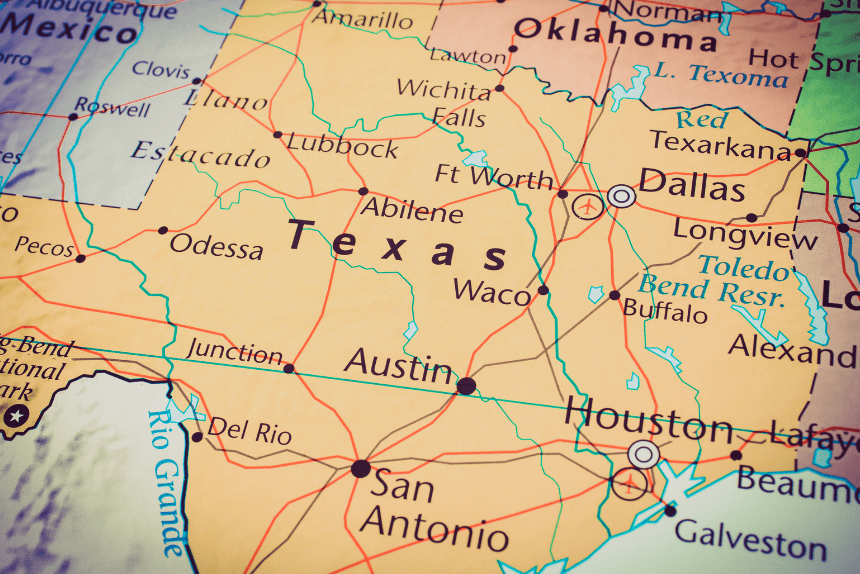In a dramatic circulate to derail the Texas redistricting concept, Democratic lawmakers have left the nation, effectively preventing a vote on the new congressional map backed by Republicans and former President Donald Trump. The redistricting plan ambitions to create additional Republican-leaning seats inside the U.S. House of Representatives, which has ignited a fierce political struggle inside the country.
Why Are Democrats Fleeing Texas?
Fifty-one Democratic legislators have fled Texas, with most of them taking refuge in Illinois. Their departure comes because the state’s Republican-managed legislature, led by means of Governor Greg Abbott, attempts to bypass a redistricting plan that would heavily favor Republicans. The new map is expected to add 5 more Republican-leaning districts, in addition to improving the stability of electricity inside the kingdom.
According to Texas regulation, two-thirds of the 150-member legislature ought to be gift for a vote to occur. By fleeing the country, the Democrats have denied Republicans the vital quorum to bypass the new map. The lawmakers say they may stay out of the nation for the entire week of the special legislative session convened by Abbott. Here is the link to our article on KFC Moves Texas.
What Are the Legal Consequences for the Lawmakers?
Texas Attorney General Ken Paxton, a Republican, has threatened legal action against the fleeing lawmakers. He warned that they might face daily fines of $500 for their absence, and he has additionally threatened to arrest them upon their return. Paxton expressed robust disapproval of the pass on social media, calling for the “use of each tool at our disposal” to locate and produce lower back the lawmakers.
However, Texas Democrats defend their moves, pointing out that they’re not leaving behind their responsibilities but are instead resisting a “rigged machine.” Gene Wu, a prominent Texas Democratic legislator, argued that the redistricting plan might undermine the will of the people they represent.
What Is at Stake with the New Map?
The Texas redistricting thought could impact several districts throughout the country, consisting of the heavily Democratic areas of Austin and the Rio Grande Valley. The new map would integrate two districts in Austin, which might be presently held by way of Democrats, and redraw northern Texas districts to encompass greater rural, Republican-leaning regions. Additionally, four Houston-area seats, which include one held by means of Democratic Representative Al Green, could be reconfigured to want Republican applicants.
Texas Republicans consider the brand new map could help them maintain on the country’s congressional seats, which presently stands at 25 out of 38. The new map may want to push that number to 30 seats, probably solidifying the Republican majority in the country and further reaping benefits from their efforts in the 2024 midterm elections. This shift could assist bolster the GOP’s slender majority in the U.S. House of Representatives, in which Republicans hold 219 seats, whilst Democrats hold 212. Here is the link to our article on the California Wildfire Crisis.
How Does This Compare to Past Redistricting Efforts?
The Texas redistricting battle is not the first time Democrats have fled the kingdom to block such proposals. This marks the third time in the current year that Democratic lawmakers have resorted to comparable methods. In 2021, Texas Democrats traveled to Washington, D.C., in an unsuccessful attempt and save the passage of recent election legal guidelines. The 2003 walkout also saw Democrats leave for Oklahoma to forestall a redistricting plan that in the long run proved to be surpassed.
While redistricting generally takes place every ten years following the U.S. Census, the 2020 Census results have sparked heightened tensions. Redrawing district lines mid-decade is an unusual and politically charged circulate, intensifying the conflict between both events over the manipulation of the nation’s representation in Congress.
What Is the Broader Impact of Gerrymandering?
Gerrymandering has long been a contentious issue in American politics, with both parties accused of manipulating district lines to favor their candidates. The Texas redistricting plan is simply one instance of the way gerrymandering can have an impact on election results. While Democrats have criticized the proposed map, they have also engaged in similar procedures in states they manage, such as Illinois and New Mexico.
In Illinois, the maximum current redistricting map has been rated poorly for political equity, receiving an F grade from the Princeton Gerrymandering Project. This highlights the enormous practice of gerrymandering across the state, irrespective of political affiliation. Some states, which include New York and California, have moved closer to independent, non-partisan commissions to address redistricting, which allows you to cut back political manipulation.
Final Thoughts
The Texas redistricting controversy underscores the deep political divide in the nation, with events fiercely battling over the future of the U.S. House of Representatives. As Democratic lawmakers hold their protest and refuse to go back to Austin, the outcome of this redistricting battle can have long-lasting implications for Texas’s political landscape. With the 2024 elections on the horizon, this trouble remains a key factor of contention inside the ongoing conflict for control of the U.S. Congress.








